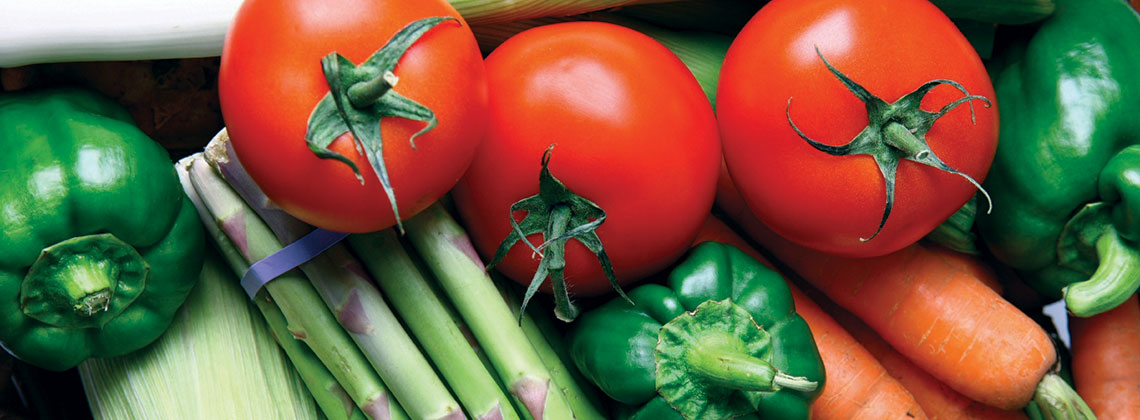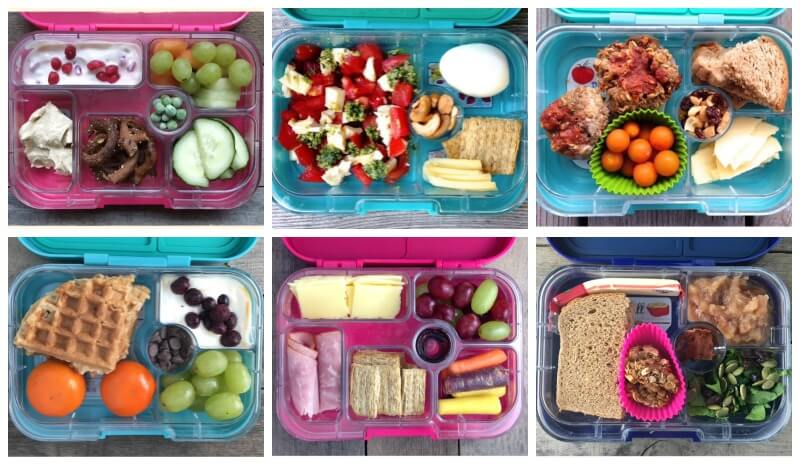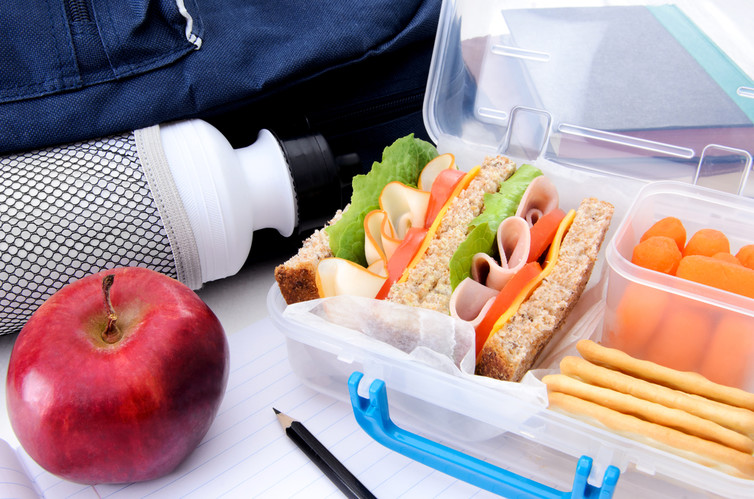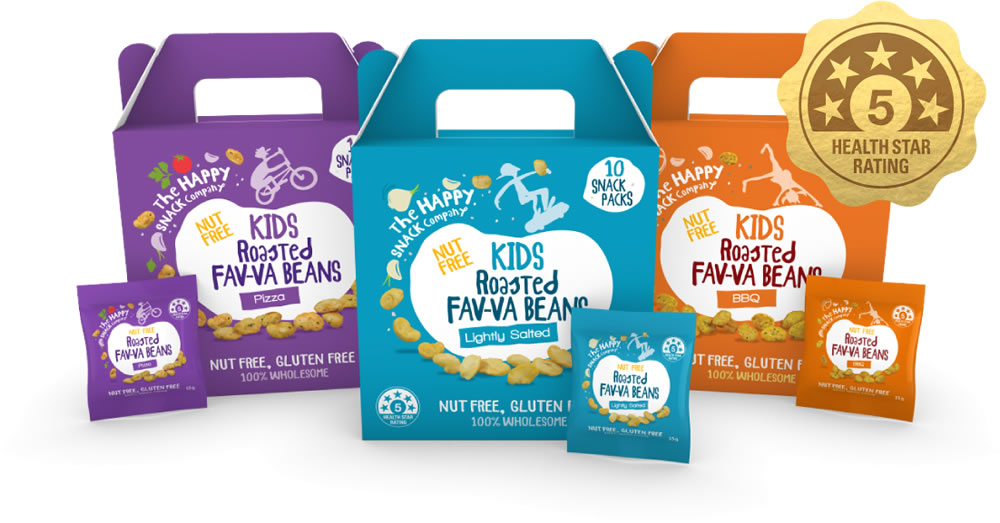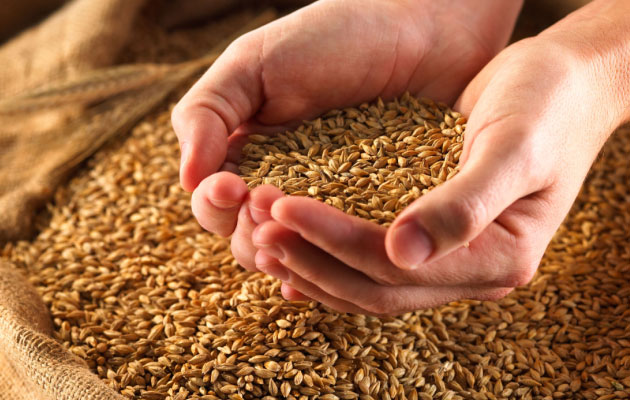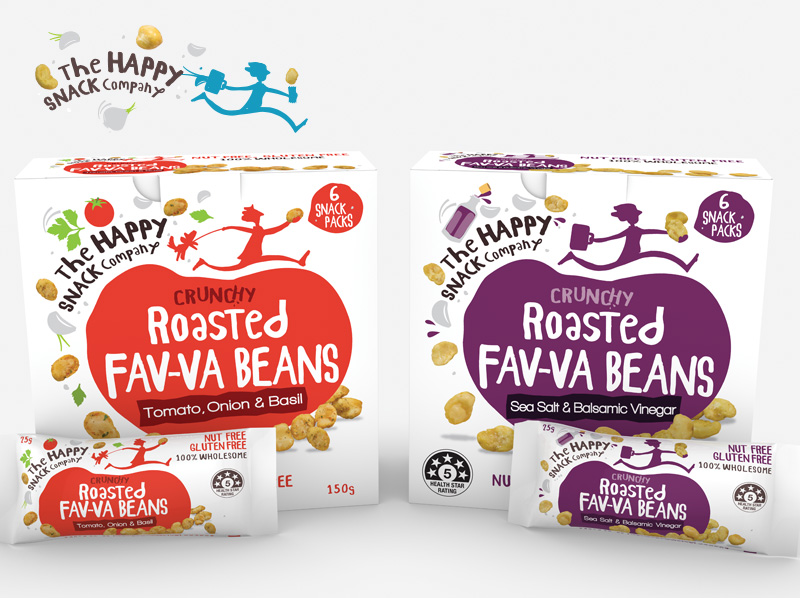What is dairy allergy and is it affecting you?
Intolerance to dairy products is seemingly on the rise with more and more people electing to cut sources of dairy from their diet due to adverse reactions. Sufferers can experience mild to severe digestive problems after consuming foods containing milk, cheese or their by-products. So what causes the problem and how can you identify if you have a dairy allergy.
Dairy allergy vs lactose intolerance?
The terms milk or dairy allergy and lactose intolerance are often used interchangeably however they are very different and distinct conditions. A milk or dairy allergy is an actual food allergy caused by the body having an abnormal, allergic reaction to the protein in milk. The immune system essentially rejects all dairy products, so when dairy is consumed, serious allergic reactions rapidly appear which can manifest as skin rashes, stomach cramps or pain, wheezing, or in severe cases a potentially fatal anaphylactic reaction. Having an allergy to dairy foods means that sufferers must always read labels on packaged foods and avoid foods that have any dairy, including the ingredients casein, whey, lactulose, lactalbumin, and ghee.
Lactose intolerance does not involve the immune system, and is caused by an entirely different disorder. Lactose is the milk sugar component present in dairy foods that is broken down by the enzyme lactase, found in the small intestine. Being lactose intolerant means that the body has a reduced ability to digest or break down these milk sugars due to having insufficient amounts of lactase in the gut. So when lactose moves through the large intestine having not been properly digested, the sugars ferment, resulting in symptoms that can include abdominal pain or discomfort, bloating, gas and diarrhoea. Symptoms typically appear between half an hour and two hours of consuming the dairy product.
Lactose intolerance is more common, takes longer to develop, and can occur at any time of life. The condition generally increases with age and is therefore quite common in the elderly.
The cause of lactose intolerance can be attributed largely to genetics. Your genetic make-up can predetermine that you have less lactase than that of the average person. Other causes can include having a bout of gastroenteritis or having a parasitic infection, where your intestines can be stripped of lactase temporarily resulting in reactions to dairy foods. A lack of iron in the diet can also impede the digestive process resulting in adverse reactions.
Dairy allergy testing and diagnosis
If you believe you have a dairy allergy or intolerance it’s best to speak to your doctor, naturopath or preferred health care provider for testing and proper diagnosis. Unnecessarily removing dairy completely from your diet can be detrimental to your health as dairy products are a rich source of nutrients including calcium, vitamin B12, riboflavin, magnesium and high-quality protein in addition to other important nutrients.
Testing is a fairly simple process and there are several options available:
- Hydrogen breath test – When lactose is not digested and broken down more hydrogen gas is produced in your breath. These hydrogen levels can be tested after drinking a beverage high in lactose.
- Stool acidity test – Levels of acid in the stool increase when lactose is undigested which can be tested with a simple stool sample.
- Food allergy test – An allergist can test the skin or take a blood sample for laboratory allergy testing.
- Elimination diet – All foods containing lactose are removed from the diet to see if symptoms improve or disappear. If symptoms reoccur once dairy foods are reintroduced, lactose intolerance is generally the most likely cause.
- likely cause.
- Milk trial – Simply changing to a lactose-free milk like almond milk as opposed to cow’s milk to see if symptoms improve.
Management of lactose intolerance
Here are some useful tips:
- Butter and cream as well as fresh cheeses like cottage cheese and ricotta have low levels of lactose so are generally well tolerated when consumed in small portions.
- Hard and mature cheese like cheddar, Swiss and edam are also usually well tolerated and fantastic options for those that suffer with lactose intolerance.
- Drinking full fat milk in small amounts is a better option than reduced fat milks as the fats slow the movement of the milk through the intestine, allowing more time for the lactase enzymes to break down the
- sugars.
- Due to increasing demand, there is now a huge range of dairy free products readily available at the local supermarket. Alternatives to cow’s milk are plentiful with options like Oat, soy, rice and almond milk.
- If you are going to consume dairy products, do so over the course of the day with a combination of other foods so that you’re not getting a large dose of lactose all at once.
- Be aware of your body and what it can tolerate – everyone is different.
The importance of a balanced diet.
You often hear how imperative it is to eat a healthy, balanced diet – but what exactly does a ‘balanced diet’ mean and just how important is it? What are the current recommendations for servings from each food group?
With so many different diets and eating plans espousing various claims; mountains of (often conflicting) information on what we should be eating and a plethora of opinions, it’s easy to get confused by what is one of the most simple things we do – eat. But it doesn’t need to be so complicated. Let’s get back to basics.
Getting the balance right in a balanced diet
It’s easy to think you’re eating well when in reality you may be eating too much meat, or not enough fruits or vegetables. You may struggle to get enough servings of grains or dairy in your day. Another trap is simply getting stuck in a rut and eating the same thing on repeat without realising you’re not getting your recommended serves.
Eating a well-balanced diet across all of the food groups means that you’re nourishing your body with a broad cross section of nutrients essential for the maintenance and functioning of a healthy body. These nutrients also help reduce our risk of serious health problems such as some cancers, heart disease, obesity and type 2 diabetes.
In order to get enough of these various nutrients, we need to eat a variety of foods from across the five food groups and be eating the recommended servings of each to achieve an ideal balance. You may think you know the recommended servings, however there are variances based on gender, age and for pregnant or breastfeeding women to be aware of, so it’s worth revisiting.
The five food groups are:
- Fruit
- Vegetables & legumes/beans
- Lean meats, poultry, fish, eggs, nuts and seeds, legumes/beans
- Grains, cereal foods, mostly wholegrain
- Milk, yogurt, cheese and or alternatives
Below are the current Australian guidelines for recommended servings from each of the food groups from the Eat for Health government website:
| Recommended average daily number of serves from each of the five food groups* | Additional serves for taller or more active men and women | |||||
| Vegetables & legumes/beans | Fruit | Grain (cereal) foods, mostly wholegrain | Lean meat and poultry, fish, eggs, nuts and seeds, and legumes/beans | Milk, yoghurt, cheese and/or alternatives (mostly reduced fat) | Approx. number of additional serves from the five food groups or discretionary choices | |
| Men | ||||||
| 19-50 | 6 | 2 | 6 | 3 | 2 ½ | 0-3 |
| 51-70 | 5 ½ | 2 | 6 | 2 ½ | 2 ½ | 0-2 ½ |
| 70+ | 5 | 2 | 4 ½ | 2 ½ | 3 ½ | 0-2 ½ |
| Women | ||||||
| 19-50 | 5 | 2 | 6 | 2 ½ | 2 ½ | 0-2 ½ |
| 51-70 | 5 | 2 | 4 | 2 | 4 | 0-2 ½ |
| 70+ | 5 | 2 | 3 | 2 | 4 | 0-2 |
| Pregnant | 5 | 2 | 8 ½ | 3 ½ | 2 ½ | 0-2 ½ |
| Lactating | 7 ½ | 2 | 9 | 2 ½ | 2 ½ | 0-2 ½ |
* Includes an allowance for unsaturated spreads or oils, nuts or seeds (4 serves [28-40g] per day for men less than 70 years of age; 2 serves [14-20g] per day for women and older men.)
For recommended serving information for children, toddlers and adolescents click here: https://www.eatforhealth.gov.au/food-essentials/how-much-do-we-need-each-day/recommended-number-serves-children-adolescents-and
Serving sizes of balanced diet
How much is a standard single serving and what does that look like?
- Fruit - approximately 150 grams or 1 medium apple, pear or orange
- Vegetables & legumes/beans - approximately 75 grams or for example, ½ a cup of cooked broccoli, ½ a cup of cooked lentils or 1 medium tomato
- Lean meats, poultry, fish, eggs, nuts and seeds, legumes/beans – roughly 500 – 600 kilojoules or 2 large eggs, 1 cup of cooked chickpeas, 65 grams of cooked beef or 80 grams of cooked chicken
- Grains, cereal foods - roughly 500 kilojoules, which is 1 slice of bread, ½ a cup of cooked pasta, a ¼ cup of muesli or 1 crumpet for example
- Milk, yogurt, cheese and or alternatives – approximately 500 – 600 kilojoules or for example, 40 grams of hard cheese, 200 grams of yogurt or 1 cup of milk
Are you getting your recommended servings?
Here’s an example of a well-balanced diet menu for a woman aged 19-50 of average height day’s , healthy weight and light activity to help get you started:
| Meal / Food | Weight / portion size | Food group and number of serves |
| Breakfast | ||
| Wholegrain breakfast cereal, with reduced fat milk |
60g cereal 1 cup (250ml) reduced fat milk |
2 grain serves 1 milk/yoghurt/cheese serve |
| Reduced fat yoghurt | 100g yoghurt | ½ milk/yoghurt/cheese serve |
| Morning break | ||
| Coffee with milk | 200ml (small coffee) | ¼ milk/yoghurt/cheese serve |
| Lunch | ||
| Sandwich with salad and chicken | 2 slices bread 40g chicken 1 teaspoon margarine 1 cup salad vegetables |
2 grain serves ½ meat and/or alternatives serve 5g unsaturated spread (½ serve) 1 vegetable serve |
| Apple | 1 medium | 1 fruit serve |
| Afternoon break | ||
| Unsalted nuts | 30g | 1 meat and/or alternatives serve |
| Coffee with milk | 200ml (small coffee) | ¼ milk/yoghurt/cheese serve |
| Evening meal | ||
| Pasta with beef mince and red kidney beans, tomato and green salad with olive oil and vinegar dressing | 1 cup of cooked pasta 65g cooked mince ¼ cup kidney beans 1½ medium tomato ½ onion 2 cups green leafy salad 2 teaspoon unsaturated oil |
2 grain serves 1 meat and/or alternative serve 1½ vegetable serve ½ vegetable serve 2 vegetable serves 14g unsaturated oil (2 serves) |
| Evening snack | ||
| Plums and reduced fat yoghurt | 1 cup stewed plums 100g yoghurt |
1 fruit serve ½ milk/yogurt/cheese serve |
https://www.eatforhealth.gov.au/food-essentials/how-much-do-we-need-each-day/sample-meal-plan-women
Take the time to take a closer look at what you’re actually eating and ensure you’re getting what you need for a healthy body and a healthy life. There’s a wealth of helpful information available online if you’re looking for ideas. Get inspired and create your new, balanced diet eating plan today!
How to build a balanced lunch box.
We all know the importance of a healthy lunch for our kids and creating a balanced lunch box, but how do you know you’re packing the right combination of foods to ensure they’re getting all the nutrients they need? What you pack for school makes up to one-third of all of their nutritional requirements in a day, so getting it right is important for helping them to concentrate, learn more and have lots of energy throughout the day. Teaching kids to eat a nutritious, balanced diet will foster positive eating habits and set them up for better health outcomes in adulthood. But even the healthiest of lunches won’t provide any nutritional value if it gets thrown in the bin, so finding tasty options that are good for them is key.
Where to start?
The overarching goal of a balanced lunch box is to provide foods from each of the five food groups:
- Vegetables
- Fruit
- Protein
- Wholegrains
- Dairy
A good way to build a lunchbox is to start with the main or core item, like a sandwich, wrap or serving of pasta, then add your building blocks of fruit and nutritious snacks, always keeping the five food groups in mind. How much you pack will depend on your child’s activity levels and the length of their day.
As your core item, sandwiches are a staple in most lunch boxes but keep it interesting with different fillings they’ll be excited about eating. Make sure bread is wholegrain as this will provide them with more sustained energy than white bread varieties. Why not try flat bread, wraps or pita bread and try cutting them into rounds or shapes for something different. Here are some fresh sandwich ideas:
- Grated cheese, pineapple, lettuce and grated carrot
- Curried Egg and rocket
- Tuna, cottage cheese, cucumber and baby spinach
- Chicken, mustard mayo, celery and lettuce
- Ham, pesto, cheese and lettuce
Water makes the best drink as kids don’t need sugary cordials, juices or soft drinks which can lead to tooth decay if drunk in excess. Always pack a bottle of water every day. Freezing a bottle of water and putting in their lunchbox will ensure they have cold water all day in the hotter months, as well as keeping food cool. You may choose to pack a small reduced fat milk drink as a special treat once a week.
Examples of a balanced lunch box
Some examples of a balanced lunchbox might be:
- A wholegrain sandwich filled with grated carrot, cucumber, lettuce and tomato; bite-sized pieces of watermelon; a boiled egg and a tub of yogurt.
- Ham and corn frittata with a salad of cherry tomatoes, cucumber and lettuce, a banana, cubes of cheddar cheese with wholegrain crackers and a pack of Kids Pizza flavour Fav-va beans.
- Chicken and capsicum pesto pasta, an apple, vegetable sticks with hummus and wholegrain crackers and a tub of reduced fat custard.
- A wholegrain wrap with grated ham, tomato, avocado and lettuce, an orange, a reduced fat chocolate milk and a packet of sultanas.
- A wholegrain pita pocket with curried egg and rocket, a banana, a tub of yogurt and slices of celery, carrot and capsicum with dip.
Hints and tips
- Talk to your kids! Ask them what they would like to eat and try and guide them in the direction of healthy eating. This opens the discussion around health and why it’s important to take care of yourself and your body.
- Always check the ‘allowable’ foods policy for your child’s school and strictly adhere to the guidelines. More and more children suffer with food allergies so ensure you know exactly what’s in what you’re packing.
- Be sure to keep lunches cool with an ice brick from the freezer or a cool, frozen drink. Bacteria quickly grows when food is not refrigerated.
- Having your children help make and pack their lunches generally means they will be more engaged in the process and therefore more likely to eat it, so let them choose items and make their own sandwiches.
- Prepare food ahead of time. Make some healthy muffins or a delicious frittata the night before or on the weekend and freeze for when you need them.
Variety is key. Kids will get bored with the same thing day in, day out, so try and be creative.
The importance of a healthy lunchbox.
Life is hectic. Our busy, fast paced schedules often mean there are just not enough hours in the day. Finding time to shop for, prepare and pack nutritious, appealing lunches for our kids can be a major challenge for many parents. Kids can be fussy and coming up with new and interesting foods that aren’t full of sugar that won’t get thrown in the bin can be tricky. But the importance of packing a healthy lunchbox is immeasurable. Kids are more alert and focused when they’re fuelled with healthy food. Higher levels of sustained concentration mean that kids can more readily retain information and therefore learn. What’s in their lunchbox can make up to a third of their daily nutrients and provides all of the energy they need to get through an action packed day. A lunchbox filled with sugary, fatty food doesn’t provide long lasting energy or necessary vitamins and minerals, and can be a major contributing factor in whether a child will be overweight or obese.
Tips to get them on the right path
Here are some ideas to get your kids on the path to healthy eating:
- Pack a balanced lunchbox
Try to include all of the food groups – a piece of fresh fruit, crunchy veggie sticks, protein like egg or lean meat, a dairy option can be yogurt or cheese and a carbohydrate like bread or a wrap for example. If you’re time poor, prepare food the night before and freeze it so that it’s ready to go in the morning. Encourage children to choose items for their lunchbox so that have a sense of empowerment about what they’re eating. Praise them when they make healthy choices.
- Get creative with adding vegetables into family meals
It’s actually quite easy to add in veggies without them even knowing. Try adding grated carrot, zucchini and celery for easy, extra veggie servings and use fresh tomatoes and herbs in sauces.
- Encourage your kids to try new tastes and flavours
Kids can be extremely fussy, but the sooner they try new and interesting produce like fruits, vegetables, herbs and spices the more likely they are to continue eating them, as kids eat what is familiar to them.
- Cook with your kids and buy less take away meals
Make preparing and cooking meals a fun, family activity and talk about the vegetables and produce being used. With our busy, fast paced lives we are often time poor and cooking dinner is the last thing on the long list, but it’s important to try and make time to cook with real ingredients and teach kids the value of making a nutritious meal for themselves.
- Keep unhealthy snacks out of the pantry
It’s much easier to say no when you don’t have to. By simply not buying unhealthy snacks they won’t be in the pantry and your kids won’t pester you for them – out of sight, out of mind.
- Lead by example
Kids take their cues from us and learn by observation. If we are making unhealthy food choices and leading inactive lives they will naturally assume this to be normal behaviour. We as parents need to take responsibility for the health of our children by doing the right thing ourselves wherever possible.
- Talk to your kids about why it’s important to eat well and treat your body well
Don’t assume your children know why they should eat a healthy, balanced diet. Educating kids on why it’s important to eat well and look after yourself is key and not just something that should be left up to teachers. The earlier kids develop a positive relationship with food the more likely they will carry it through to a healthy adulthood.
Healthy snacks perfect for lunch boxes.
When it’s back to school time, it’s time to put away the toys and games and time to start thinking about the stationery list, getting the uniforms organised and choosing what to pack in the school lunch boxes to get them off to a healthy start.
Building a healthy lunch box
These days most parents want to feel good about what their child is going to eat between 9am and 3pm and are far more selective about what’s going in the trolley. But it’s not easy finding products that fit the bill. There’s complicated labels and ingredients, and everywhere you look there’s high sugar, high salt, high fat, highly un-nutritious fare for our kids. If this all sounds too familiar, take heart - 62% of parents are finding it hard to choose healthy, lunchbox friendly snack options their child would like 1. Adding to the challenge is the steady increase in food allergies among children, making parents even more anxious about what to send kids to school with.
The increase in food allergies
In Australia, almost three in every 100 children have a peanut allergy 2. Due to the seriousness of the problem and increasing numbers of sufferers, more and more schools are having to declare themselves ‘nut free zones’ to protect the safety of children with allergies. In fact, 77% of parents say they need to be mindful of what goes into the lunch boxes because of allergies 2.
Healthy can equal delicious
The Happy Snack Company aims to take the stress out of buying nutritious snacks for children they’ll actually love. With lunch box friendly packs in BBQ and pizza flavour, our delicious Chic Pea and Fav-va bean snacks do not contain nuts or gluten and are 100% free from artificial flavours and additives. Backed with the confidence of a full five-star health rating, you know you’re making a good choice for you and your family.
What’s even better is that they’re not only perfect for the kids’ lunch box but for yours too! Chickpeas and fava beans pack a mean nutritional punch and make the ideal snack for sticking to the new years’ resolution for a healthier you.
Both fava beans and chickpeas are a great source of soluble and dietary fibre, important for maintaining a healthy digestive system. Soluble fibre may assist with reducing the absorption of cholesterol into the bloodstream and helps maintain blood sugar levels, which may help to reduce the risk of developing heart disease and also aid in managing diabetes. The dietary fibre in fava beans and chickpeas and their low glycemic index (GI) may also assist with weight loss by making you feel fuller for longer. Not to mention they are high in protein, low in saturated fat and boast a long list of beneficial vitamins and nutrients.
With a satisfying crunch of toasty goodness, tossed in a delicious blend of seasonings, our Chic Peas and Fav-Va beans come in a range of tasty flavours like Sea Salt and Balsamic Vinegar; Lime and Cracked Pepper; Tomato, Onion and Basil and the classic Lightly Salted, so there’s something for everyone’s lunch box.
- Lightspeed GMI November 2015
- https://www.allergyfacts.org.au/living-with-the-risk/allergen-specifics/peanut
Peanut allergy: what it is and why it is on the increase.
A peanut allergy is a type of food allergy triggered by contact with peanuts and occurs when the body perceives peanut proteins as something harmful. Chemicals are released into the system to fight off these proteins, triggering an allergic reaction. Reactions usually occur within minutes of exposure, and can be relatively mild or very severe depending on the individual and the level of exposure to the allergen. For some sufferers, exposure to even the smallest amounts of peanuts can cause a very serious reaction.
Sufferers can experience a range of symptoms like a runny nose, coughing and wheezing; itchy, watery eyes; skin reactions like spots, hives and swelling; diarrhoea, vomiting and nausea; through to a severe, life-threatening condition called anaphylaxis. Anaphylaxis is the most severe form of allergic reaction and requires immediate medical treatment. Often symptoms can initially be mild but can rapidly worsen to the point of medical emergency.
Cross Contamination of Allergens
Reactions can occur when sufferers are exposed either directly or indirectly to peanuts. Consuming peanuts or anything containing peanuts is the most common cause of peanut allergy reaction. Direct skin contact with peanuts can also trigger a reaction. More difficult to avoid, is indirect contact with peanuts. This usually happens when food is cross contaminated, coming into contact with peanuts during the processing and handling stage. In some cases, a reaction may occur if the sufferer inhales the allergen, peanut flour and cooking spray being example sources.
Thankfully, manufacturers in Australia are legally obligated to label packaging if their products may contain traces of nuts, so consumers can make more informed decisions. However living with a peanut allergy is very challenging, and even the most vigilant of sufferers can still be exposed to the allergen and risk a serious reaction.
People who suffer from other allergic conditions like hay fever, asthma and eczema are more likely to have a peanut allergy. Milk, eggs, shellfish and other nuts are other common types of foods that may cause a reaction.
Peanut allergy is one of the most prevalent types of food allergies and is becoming increasingly common. Allergies can develop at any stage of life, but is most common in children aged five years or younger, and even young babies can develop symptoms of food allergy.2
Peanut Allergy in Australia
In Australia, almost three in every 100 children have a peanut allergy.1 Due to the seriousness of the problem and increasing numbers of sufferers, more and more schools are having to declare themselves ‘nut free zones’ to protect the safety of children with allergies. This can be a source of stress and anxiety for parents who aren’t sure of what is safe to pack in their child’s school lunch box. For parents of a child with an allergy, they are on constant alert as to what their child may consume both inside and outside of the home, and even if their own child doesn’t suffer from the allergy, they could share food with a child who does, resulting in potentially dire consequences.
Studies have shown that food allergy affects 10% of children up to one year of age; between 4-8% of children aged up to five years of age and approximately 2% of adults 2 The good news is that around 20 percent of children will outgrow their peanut allergy.1 Children who experience more severe allergic reactions including breathing problems, however, are less likely to grow out of their peanut allergy than children who have had milder reactions.1
So why is food allergy becoming so common? Findings are still unclear at this stage however research continues. There are many studies on allergy prevention, however, there are no definitive guidelines on how to guarantee the prevention of food allergy.
- https://www.allergyfacts.org.au/living-with-the-risk/allergen-specifics/peanut
- http://www.allergy.org.au/patients/food-allergy/food-allergy
The Happy Snack Company's Fav-va Beans.
Our delicious, Australian grown Fav-va Beans are slow-roasted broad beans tossed in delicious seasonings perfect for every taste. Satisfyingly crunchy, they make healthy snacking tastier and easier. Nut free, gluten free, high in protein and low in saturated fat, Fav-va Beans are the healthy, wholesome snack the whole family can enjoy.
Our Happy Snack Fav-va Beans are:
- 100% gluten free
- 100% nut free
- Five Star Health Rating
- High in Protein
- Free from artificial flavours and additives
- Not blended or extruded
- Grown, made and packed in Australia
Ideal for a quick, healthy snack, in school lunch boxes or as a great after school hunger buster, our Fav-va Beans are now in a range of tasty new flavours: Tomato, Onion & Basil; Sea Salt & Balsamic Vinegar; Lime & Cracked Pepper; Lightly Salted; Kids BBQ and Kids Pizza.
Discover feel good flavour in the health food aisle of your local supermarket.
What is gluten and what does it mean to be gluten intolerant?
You see the term gluten-free used everywhere on food packaging these days, but what exactly is gluten and what does it mean to be gluten intolerant? Gluten is a protein that can be found in wheat, rye, malt, barley, triticale and oats. Gluten is a sticky protein that binds the dough in breads and baked goods. Often wheat and gluten are thought to be the same thing and the terms are used interchangeably, however this is actually incorrect. Wheat is a grain, whereas gluten is a protein found in various grains, so you can be allergic only to wheat and still enjoy other types of grains, but if you are allergic to gluten you generally cannot.
Having an adverse reaction to gluten can be referred to as gluten intolerance, gluten sensitivity or non-coeliac gluten sensitivity. For these people, consuming even the smallest amount of gluten can have very unpleasant consequences. Symptoms like bloating, excessive wind, abdominal pain and diarrhoea are common, as well as more general ailments like tiredness, body aches and pains and poor concentration. Given these relatively generic symptoms, being diagnosed can often be difficult and consequently frustrating. However it is very important to see your doctor if you are experiencing any of these symptoms. So what causes these reactions? People who suffer from gluten intolerance, gluten sensitivity or non-coeliac gluten sensitivity have a physical condition in their gut whereby undigested gluten proteins in the intestines are identified by the body as being harmful, causing a reaction that irritates the gut and results in these symptoms that vary in severity depending on the individual.
The most extreme case of reaction to gluten is a very serious condition called Coeliac disease, (pronounced see-lee-ak) an auto-immune condition where gluten actually damages the small intestine which is the part of the digestive system that absorbs nutrients. If left untreated, Coeliac disease can lead to other diseases. One in 70 Australians is currently living with Coeliac disease. People are born with a particular genetic make-up that predisposes them to coeliac disease, however many people with the gene never actually get the condition. Avoiding foods that contain gluten is the only treatment.
Symptoms of Coeliac disease can include:
- Bloating
- Diarrhoea
- Fatigue
- Anaemia
- Wind
- Constipation
- Weakness
- Nausea
- Vomiting
- Stomach cramps
- Weight loss and also weight gain
The good news is that for some, if you remove gluten from the diet the gut eventually heals itself over a period of time and the majority of symptoms stop. In these cases, it is sometimes possible to reintroduce some gluten into the diet. For others who have a genetic predisposition to gluten and suffer severe reactions, their bodies may never be able to process gluten.
Whilst there are obvious restrictions, there is still a wide array of foods to be enjoyed that do not contain gluten. Be sure to always read the label if buying processed or packaged food and if dining out at restaurants and you’re not sure, ask questions.
Some examples of gluten-free food:
- Fresh fruits and vegetables
- Meat, fish, chicken, bacon
- Milk, fresh cream, block cheese
- Cereal and baking products made from corn flour, soya flour, lentil flour or rice
- Gluten free pasta, rice noodles, 100% buckwheat noodles
- Legumes, beans
- Wine, spirits, tea and coffee
We’re pleased to say that all of The Happy Snack Company Chic Pea and Fav-va Bean products are 100% guaranteed gluten free so can be enjoyed with confidence by those who suffer with gluten intolerances.
Top 10 reasons to choose Happy Snack Company snacks.
There are so many reasons to choose The Happy Snack Company snacks for you and your family - here’s 10 of the best:
The Happy Snack Company snacks are 100% guaranteed nut free.
We understand that nut allergies are a serious, challenging issue for many families, which is why we’re pleased to be able to make life a little easier by making healthy, delicious nut-free snacks you can buy with confidence. All of The Happy Snack Company products are processed in our dedicated nut-free factory, so you can trust that you’re making the right choice for you and your family.
Our range of Chic Peas and Fav-va Beans are good for you, and they taste delicious.
Both our Chic Peas and Fav-va Beans boast a long list of nutritious qualities that make them a great addition to a healthy diet. What’s even better is that they really do taste great! A lot of ‘healthy’ snacks aren’t always high in taste, but our Happy Snacks are packed with crunchy, delicious goodness the whole family will enjoy. Now in a whole new range of flavours like Lightly Salted; Sea salt and Balsamic vinegar; Lime and Cracked Pepper; Tomato, Onion and Basil and Kids Pizza and BBQ, there’s something for everyone
All of The Happy Snack Company products have a Five Star Health Rating.
The Health Star Rating system aims to help consumers make healthier choices by clearly labelling packaged food according to nutritional profile. Stars are calculated using:
- Energy (kilojoules)
- Risk nutrients – saturated fat, sodium (salt) and sugars
- Positive nutrients – dietary fibre, protein and the proportion of fruit, vegetable, nut and legume content.
Ranging from the lowest rating of ½ a star to the highest rating of five stars, the more stars a product has, the healthier it is.
All of the The Happy Snack Company products have been awarded a Five Star Health Rating, so you can be assured you’re making a great choice
All of The Happy Snack Company snacks are 100% gluten free.
Many people suffer from gluten intolerances, coeliac disease or simply choose to follow a gluten-free diet which can often make finding nutritious and delicious gluten-free snacks difficult. We’re pleased to say that all of The Happy Snack Company Chic Pea and Fav-va Bean products are guaranteed gluten-free, so healthy snacking just got a little bit easier.
Happy Snack Company snacks are great for school lunches
With the prevalence of food allergies and childhood obesity increasing year on year, and more and more schools ‘nut free zones’, it is now critical for parents to be aware of exactly what is going into their child’s school lunch box. This can be a source of anxiety for many parents who aren’t sure of what they should and should not include. Happily, all of our products are nut and gluten free and do not contain wheat, dairy or eggs. Naturally high in fibre and protein, low in fat and free from artificial additives, our happy snacks are a quick, easy option you can trust. Now in Kids Pizza and BBQ flavours in convenient, lunch box friendly 15 gram packs, they’ll love the crunchy taste, and you’ll love knowing you’re giving them a nutritious, wholesome snack.
Fava beans and chickpeas are naturally high in fibre
One of the many fantastic nutritional benefits of both fava beans and chickpeas is that they are naturally high in fibre. Fibre is an essential part of a healthy diet and helps maintain good digestive health, maintains blood sugar levels and assists with reducing the absorption of cholesterol into the bloodstream, which can help to reduce the risk of developing heart disease and can aid in managing diabetes.
Fava beans and chickpeas are naturally high in protein and low in fat and kilojoules
Adding to the long list of health benefits these wonderful little legumes can boast is that they are a fantastic source of protein and are low in fat and kilojoules. Protein is essential for the human body to perform the most basic of tasks. One cup of cooked chickpeas equates to a serving of protein – pretty impressive! Plus, they are low in fat and kilojoules - making an excellent addition to a healthy diet.
The Happy Snack Company snacks are free from wheat, dairy and eggs
Adhering to a diet that excludes wheat, dairy or eggs isn’t easy, but we hope to make it a little simpler with our delicious range of Chic Peas and Fav-va beans that are totally free of all three. Just chickpea and fava beans, roasted to perfection and tossed in seasonings you could find in your pantry, and nothing else. Enjoy!
Fava beans and chickpeas are an excellent source of vitamins and minerals
Both of these little wonder foods are jam packed with goodness and dense with nutrition. Both contain folate, magnesium, iron, B-group vitamins, zinc, manganese, copper and phosphorus.
The Happy Snack Company products are grown, made and packed in Australia, and come from crops that restore Australian soils.
All of our Chic Peas and Fav-va beans are grown right here in Australia and are processed and packed at our purpose built facility in sunny Queensland. Chickpeas not only produce a valuable crop but at the same time also provide a natural organic method of breaking the disease cycle in other valuable food crops. This means less fungicide, less insecticide and a cleaner, greener environment. Chickpeas are powerful nitrogen fixing legumes. Their deep root system plays an important role in stabilising soils and preventing erosion. These clever little plants actually restore depleted soils.
Are roasted fava beans good for me?
Fava beans are packed with nutrition. Also known as broad beans, vicia fabas, horse beans, windsor beans or field beans - these delicious legumes have been enjoyed around the world for thousands of years and deservedly so. Fava beans boast a very long list of nutritious benefits.
Fava beans, like all other legumes, are naturally high in fibre and protein, thus providing a number of health benefits. Fibre in the diet is very important for maintaining a healthy digestive system. Soluble fibre can assist with reducing the absorption of cholesterol into the bloodstream and helps maintain blood sugar levels, which can help to reduce the risk of developing heart disease and can aid in managing diabetes. The dietary fibre in fava beans and low glycemic index can also assist with weight loss by making you feel fuller for longer.
Nutrition Australia recommends males should aim to include 30 grams of fibre in their diets per day and females should aim for 25 grams. Amazingly, one cup of fava beans contains approximately 9.2 grams of dietary fibre.
Fava beans are also high in protein and iron so they are a brilliant substitute for meat. Protein is essential for the human body to perform the most basic of tasks, essentially we cannot function without it. Skin, muscle, brain cells, hair and nails are all protein-based parts of the body.
Fava beans are rich in phyto-nutrients and plant sterols which have been shown to have a direct correlation with health promotion and disease prevention. Fava beans have no cholesterol or saturated fat, and contain many essential vitamins and minerals such as folate, thiamin, vitamin K, vitamin C, vitamin B-6, potassium, copper, selenium, zinc, magnesium, phosphorus manganese and calcium. These vitamins and minerals play a vital role in the overall health and development of our bodies.
Given all of these incredible benefits fava beans are fantastic for everyone, but provide extra valuable nutrition to those who are on vegetarian, gluten free, heart healthy, calorie controlled and diabetic diets.
So, now you know how good these incredible little legumes are for you, how can you add them into your diet? There are lots of simple ways to incorporate this wonder food into your repertoire. Try adding to soups, casseroles or stews, add to salads or top off your stir-fries and curries with a few fava beans to add extra taste and texture. Try fava beans instead of green peas and beans with your next meal. Or for the purists, fava beans are simply delicious sauteed in butter and seasoned with salt, pepper and a sprinkling of your favourite fresh herbs.
Or if you’re simply looking for a quick and easy, healthy snack for yourself and your family that you don’t have to worry about being laden with fat, sugar and artificial additives, The Happy Snack Company Fav-va Beans are ideal. Nut, gluten, wheat, dairy and egg free, but definitely not taste free, our Fav-va Beans are slow roasted to perfection and seasoned with all natural ingredients. Now in a new range of exciting flavours like Lightly Salted; Sea Salt and Balsamic vinegar; Lime and Cracked Pepper and Tomato, Onion and Basil, there’s something for everyone.
Finally, a wholesome snack you can feel good about giving to your family that’s actually delicious. Healthy snacking just got easier.

